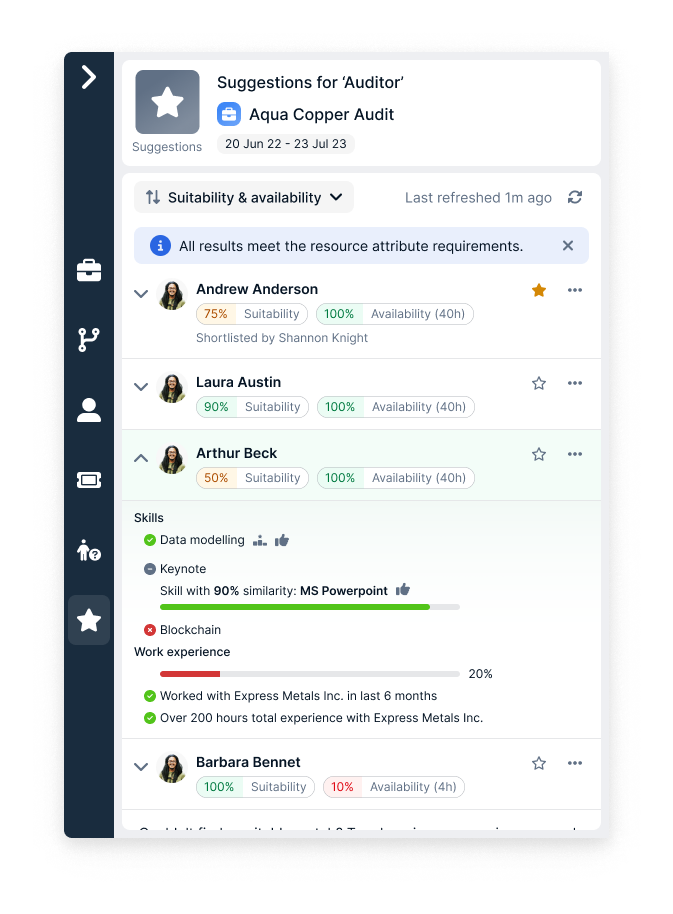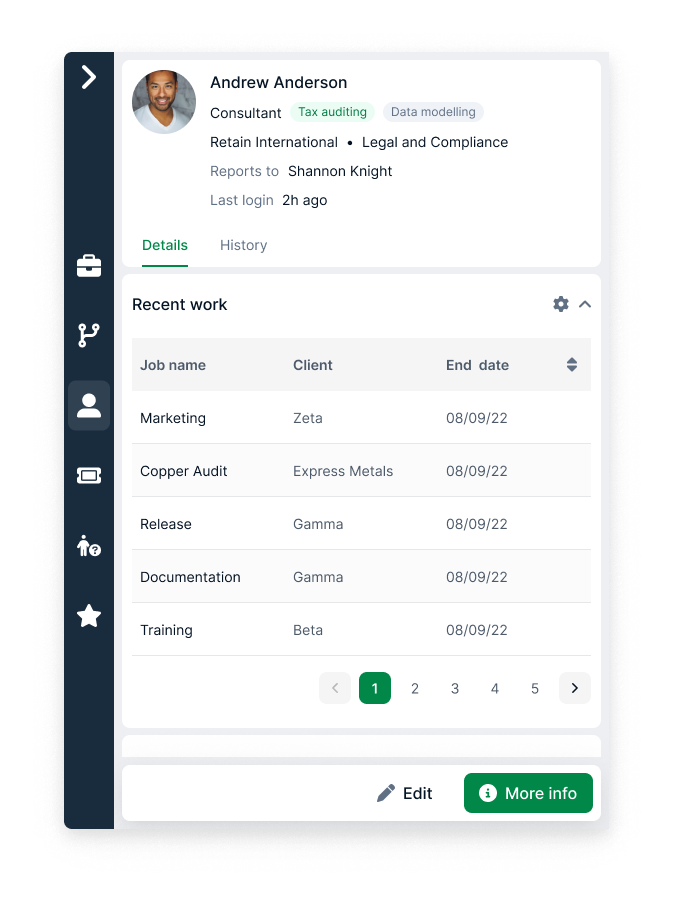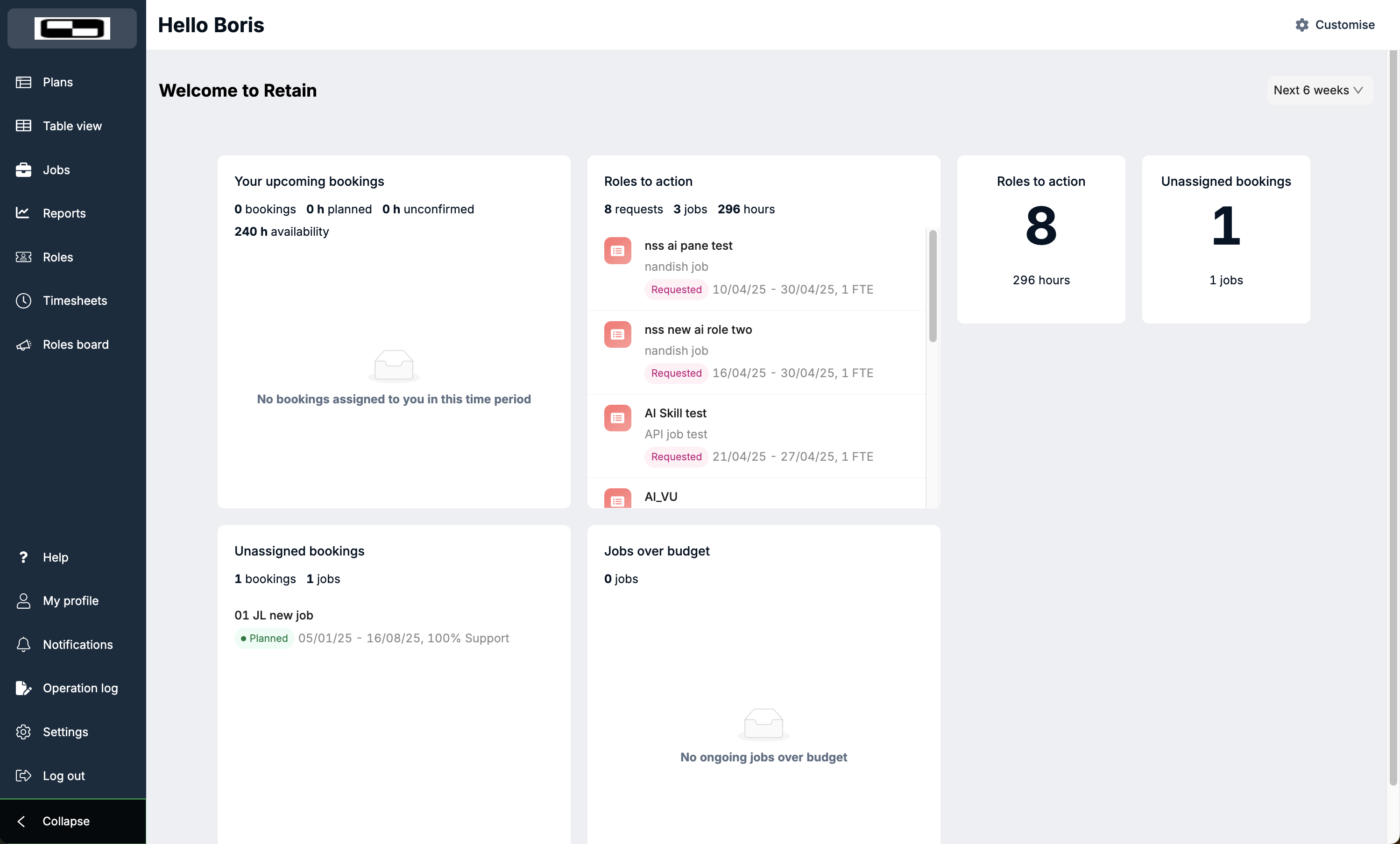Professional services firms are facing a talent crunch, but not necessarily in an obvious way. According to AICPA and CIMA, 41% of professional services firms cite talent shortage as their biggest challenge over the next five years. But in many cases, as well as finding the right talent, they need to make full use of the talent they already have.
Without clear visibility into skills across the business, resource planning becomes reactive. Teams are staffed based on who’s known, not who’s best suited. Specialist capabilities sit underused. Development stalls. And decision-makers are left managing capacity in the dark.
As project complexity increases and clients expect more specialised expertise, this is a strategic risk.
This article explores why skills tracking is becoming a boardroom priority.
The true professional services skills crisis

When firms say they’re facing a talent shortage, what they often mean is: we don’t have the right skills in the right places at the right time. But instead of this necessarily being a hiring problem; it’s often a lack of visibility.
The traditional approach to resource planning relies on job titles, past project familiarity, and informal networks. The same high-performing individuals are repeatedly booked, but this is not necessarily because they’re the best fit, but because their capabilities are known. Meanwhile, niche expertise remains buried in spreadsheets or siloed systems.
For leaders, this creates a hidden inefficiency. High performers burn out, early-career staff struggle to progress, and hard-won capabilities go underutilised. From a firm-wide perspective, it limits your agility and affects both delivery quality and client trust.
So what’s the fix? The answer is visibility. You need to see your full talent pool both in terms of headcount and capability. Firms that take a skills-first approach are better able to match people to the right work, find underused potential, and make informed investment decisions about where to build or buy expertise.
Skills data is the missing layer in resource planning

Most professional services firms have made significant strides in workforce planning, but many are still planning with incomplete information.
Availability is easy to track. Capability is not. Resource managers know who’s free next week, but not always what that person is best equipped to do. Skills information lives in disconnected HR systems, performance reviews, or manager's memory. That makes it hard to build balanced, high-performing teams, especially under time pressure.
This is where skills data comes in.
Leading firms are now building structured, standardised skills taxonomies to classify and track technical, regulatory, and behavioural capabilities across the business. Tools like Retain Cloud integrate this taxonomy directly into resource planning workflows, enabling managers to search, match, and filter based on skill level, recent usage, and verified experience, just like in this example below.

Instead of guessing who might be a good fit, managers can see exactly why someone is being recommended and what development opportunities that project might offer. This change from helps firms deploy talent more effectively, forecast with confidence, and respond faster to changing demand.
Compliance risk starts with poor visibility

As you’ll be well aware, in many engagements, particularly in audit, tax, and regulated advisory work, compliance is also key. Certain roles require specific certifications, technical experience, or even regulatory authorisations before work can even begin.
When that information is buried in HR records, outdated spreadsheets, or manual checks, leaders face two risks: slowing down delivery and exposing the firm to audit or contractual failures. In high-stakes projects, even a short delay in verifying qualifications can push timelines off track or damage client trust.
A centralised skills and certification record changes that dynamic. Decision-makers can see at a glance whether the right credentials are in place, when they expire, and where renewals or upskilling are needed. That reduces admin load, keeps projects moving, and provides a clear audit trail for regulators or clients.
The strategic advantage? Compliance becomes a proactive part of planning, not a last-minute scramble, which allows leaders to allocate resources with speed and certainty.
Development needs the right resource data

The majority of professional growth in services firms happens in the flow of work. Every client engagement, every stretch assignment, and every cross-functional project builds skills. The problem is, most firms don’t capture that development in a systematic way.
Without that visibility, leaders miss two critical opportunities:
- Deploying emerging capability sooner: New skills may be ready to use well before the next formal review cycle.
- Targeting training investment: Without knowing what’s being learned on the job, firms risk funding courses that duplicate or miss what’s actually needed.
Skills tracking changes this. By linking project history to skills growth, firms create a live, evolving picture of capability. Leaders can identify who’s ready for more responsibility, plan succession with evidence, and create development pathways that match business demand and individual aspirations.
This approach also strengthens retention and prevents burnout. Employees see a direct connection between the work they do and their career progression—something 94% say would make them stay longer with an employer. For decision-makers, that’s a measurable impact on both capability and stability.
Skills transparency wins clients

Clients buy when they have confidence in the team that will deliver. They want to know that your people have relevant experience, current knowledge, and the right certifications for the work at hand.
When skills data is scattered, providing that assurance means scrambling to compile CVs, project histories, and proof of credentials. It’s reactive, time-consuming, and prone to gaps.
With robust skills tracking, leaders can respond differently. You can instantly search for people who’ve worked on similar projects, hold specific regulatory qualifications, or bring complementary behavioural strengths to the client environment. You can even see the history and details of past client work to make the best matches, like in this example below.

That means bids can be backed with data and delivery teams can be assembled with both precision and speed.
There’s also a competitive edge. Skills visibility often surfaces hidden talent capabilities that aren’t evident from someone’s current role but are highly relevant to client needs. When those capabilities are brought into play, you can exceed expectations in ways competitors can’t easily match.
Skills data must flow across the business

Skills tracking only delivers its full value when it’s connected to the rest of the firm’s operational ecosystem. If capability data sits in one platform, scheduling in another, and financial tracking in a third, decision-makers are still left piecing together an incomplete picture.
For professional services leaders, the goal is a single, connected view, where skills, availability, project demand, and commercial data flow seamlessly between CRM, HR, finance, and delivery systems.
Platforms like Retain Cloud are built for this kind of integration, linking with Microsoft Dynamics, SAP, Salesforce, and other core systems. This ensures resource, project, and performance data is synchronised, so staffing decisions are made with both operational and financial context in mind.
The benefit for decision-makers is twofold:
- Strategic clarity: You can see the true cost, capacity, and capability impact of every resourcing choice.
- Operational speed: Managers can act quickly without chasing data or reconciling conflicting records.
When skills tracking is embedded into the firm’s broader systems, it stops being a siloed HR function and becomes a strategic lever for profitability, compliance, and growth.
From skills gaps to strategic advantage
When it comes to talent management in professional services, the real differentiator now is knowing exactly what skills you have, where they sit, and how they’re developing.
Skills tracking enables faster, more precise resourcing, keeps compliance risks in check, strengthens client confidence, and ensures development is aligned with business priorities. For decision-makers, it provides the clarity needed to make confident, data-backed choices in an increasingly competitive market.
➡ Ready to see what skills-first planning could mean for your firm? Book a confidential, no-obligation demo of Retain Cloud and explore how leading firms are connecting capability with strategy.


